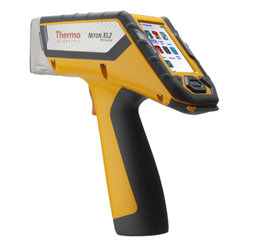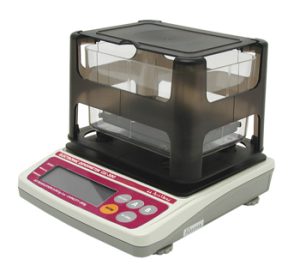
JCK – The Jewelry Trade’s Most Important Global Gathering
The JCK show provides the world’s jewelry trade community with the optimal stage for business growth by uniting the industry in one location – fabulous Las Vegas.

In the world of precious metals, accuracy and efficiency are paramount. Whether you’re a jeweler, scrap metal dealer, or mining engineer, the ability to quickly and accurately determine the composition and purity of precious metals is essential. This is where the Niton XL2 100 XRF Precious Metal Analyzer shines.
In this guide, we will delve into the intricacies of using the Niton XRF Precious Metal Analyzer effectively. From its basic operation to advanced techniques, we will equip you with the knowledge needed to leverage this powerful tool to its fullest potential.
The Niton XL2 100 XRF Precious Metal Analyzer utilizes X-ray fluorescence (XRF) technology to analyze the elemental composition of precious metals. It works by irradiating a sample with X-rays, which causes the atoms in the sample to emit characteristic X-ray fluorescence. By measuring the energy and intensity of these emissions, the analyzer can determine the elemental composition of the sample.
Before using the Niton XL2 100 XRF Precious Metal Analyzer, it’s essential to familiarize yourself with its components and functions. The analyzer typically consists of a handheld device with a built-in display screen, trigger button, and various control buttons. Additionally, it may come with accessories such as a sample stand and a protective carrying case.
Calibration: The first step in using the analyzer is calibration. Calibration ensures the accuracy of the instrument by aligning it with known standards. Follow the manufacturer’s instructions to calibrate the analyzer. This can be found on the Thermo Scientific website.
Sample Preparation: For solid samples, ensure they are clean and free of any contaminants. For liquids or powders, use suitable containers or sample cups. Please keep in mind that the test can be performed while the sample is in a plastic container.
Safety Precautions: X-ray fluorescence involves the use of radiation, so it’s crucial to take appropriate safety precautions. Always wear protective gear such as gloves and goggles when handling samples and follow all safety guidelines provided by the manufacturer. Using XRF usually requires that it is registered with your local authority. Please ensure that this is done, or it may result in a fine.
Power On: Start by powering on the Niton XL2 100 analyzer.
Sample Analysis: Place the sample on the sample stand or in the sample cup holder. Position the analyzer close to the sample and press the trigger button to initiate the analysis.
Data Interpretation: Once the analysis is complete, the analyzer will display the results on the screen. Interpret the data to determine the elemental composition and purity of the sample.
Data Logging: Many analyzers have the capability to log and store data for future reference. Take advantage of this feature to keep records of your analyses.
Quantitative Analysis: In addition to qualitative analysis, the Niton XL2 100 XRF Precious Metal Analyzer can also perform quantitative analysis to determine the concentration of specific elements in a sample. This requires advanced calibration and data processing techniques.
Surface Analysis: The analyzer can be used to analyze the surface composition of samples without the need for sample preparation. This is particularly useful for analyzing coatings or platings on jewelry or other objects.
Multi-Element Analysis: The Niton LX2 100 XRF Precious Metal Analyzer can analyze multiple elements simultaneously. This allows for faster and more comprehensive analysis of complex samples.
Regular Maintenance: Keep your analyzer in optimal condition by performing regular maintenance as recommended by the manufacturer. This may include cleaning the instrument, calibrating it periodically, and replacing the consumable parts.
Quality Control: Implement quality control measures to ensure the accuracy and reliability of your analyses. This may involve analyzing reference standards periodically and verifying the performance of the analyzer.
Training and Education: Invest in training and education for yourself and your team to maximize the effectiveness of the analyzer. Thermo Scientific offers training programs to help users master the use of the Niton XL2 100.

The JCK show provides the world’s jewelry trade community with the optimal stage for business growth by uniting the industry in one location – fabulous Las Vegas.


How to use a specific gravity scale for testing and verifying precious metal bars and coins.